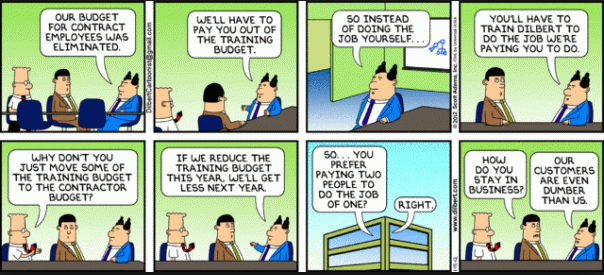Beyond Budgeting… A journey towards real customer service
18/07/2017


Over the past two years or so, a fellow Visiting Fellow – Steve Morlidge – has been introducing me to the term and benefits of “Beyond Budgeting”. This has provided one major “Ah-ha! Moment”. It also chimes with work we have done with Cranfield in developing what we call a “Systems Approach to Project Management” (more of that in a later blog).
Budgeting and Project Planning (particularly large projects) have a lot in common, four of which are:
- They lay out some form of forecast of revenue, costs, profit based on last year’s results plus expectations of stakeholders on the one hand, and on the other forecast of timeframe and spend, along with projected benefits both based on certain assumptions
- Both the Budget and the Project Plan assume that nothing changes in the system (e.g. the environment, markets, technology etc.) and that expectations and requirements remain cast in concrete over the life-time of the budget or the plan
- They are then used by the executive team to track, on the one hand, how revenue, costs and profit are varying (i.e. variance) from budget (like the budget was God-given and correct), and on the other how deliverables are being delivered along with consumption of effort, materials etc. (cost), and projected expenditure to completion against the project plan (like it was God-given and correct)
- By locking-in the budget or project plan in this way (where it is immoveable) THE ONLY PARAMETER YOU CAN ADJUST IS personal (or team) performance – and hence we get into the perversions of personal (or team) incentives and rewards! My Ah-ha! moment (many thanks Steve!)
So the crux to Beyond Budgeting (as well as Planning) is to accept that:
- Assumptions made may be wrong or change
- The world-system and expectations/requirements may change – particularly as budgets and plans span timeframes typically far longer than the timeframes in which the environment/requirements change
- That in budgeting and planning we, as humans (see Daniel Kahneman, Thinking Fast & Slow) always have an optimism bias
And the crux is that in order to be “agile” or “responsive” (as all the big four consulting firms are telling us we need to be IN ORDER TO STAY IN BUSINESS) we can only do so if budgeting and planning functions accept the above.
So how do you track progress in this moving feast – next blog…
Categories & Tags:
Leave a comment on this post:
You might also like…
Automotive Engineering: From student to hypercar innovation at Rimac
We sat down with recent graduate Thomas Perrin, to discuss how his year on the MSc in Automotive Engineering at Cranfield University propelled him from the lecture hall directly into the ...
What this year at Cranfield really meant to me
Every Cranfield journey is unique. In this alumni reflection, Zachea Scicluna shares what her year at Cranfield truly meant, from facing uncertainty to gaining hands-on experience in industry-backed projects. I’ve been reflecting (and delaying) ...
Preparing for assignments and exams?
Sorry! We know it seems a bit mean to mention the exams in January rather than looking forward to the break before it! However, we know many of you will be thinking about your forthcoming ...
Screening for FTSE 100 companies on Bloomberg
So you’re researching an index and need some data on its constituent companies? Bloomberg’s Equity Screening tool makes light work of this, not just for the FTSE, but for indices, exchanges and sectors worldwide. Type EQS ...
Accelerating my future: How Cranfield put me on the fast track to automotive safety innovation
Hello! I’m Michaela Kaiser, and I’m thrilled to share my journey studying abroad. I’m from Calgary, Canada, and I recently graduated from Cranfield’s MSc Automotive Engineering course. My path to Cranfield ...
From Myanmar to Cranfield: My path to Renewable Energy
As someone who is passionate about sustainability, my career goal is to build a path in the renewable energy sector. My aspirations comes from the benefits of developing sustainable energy sources and ensuring energy ...






